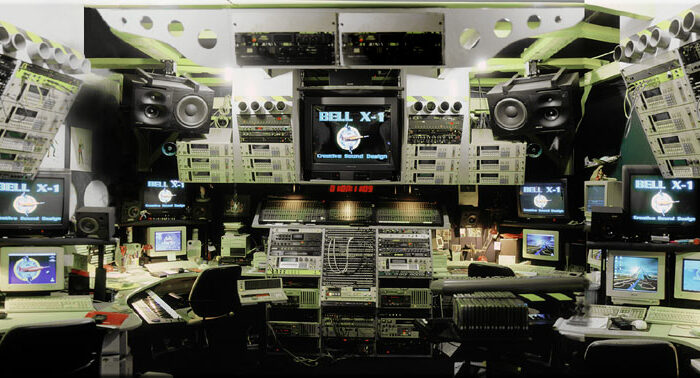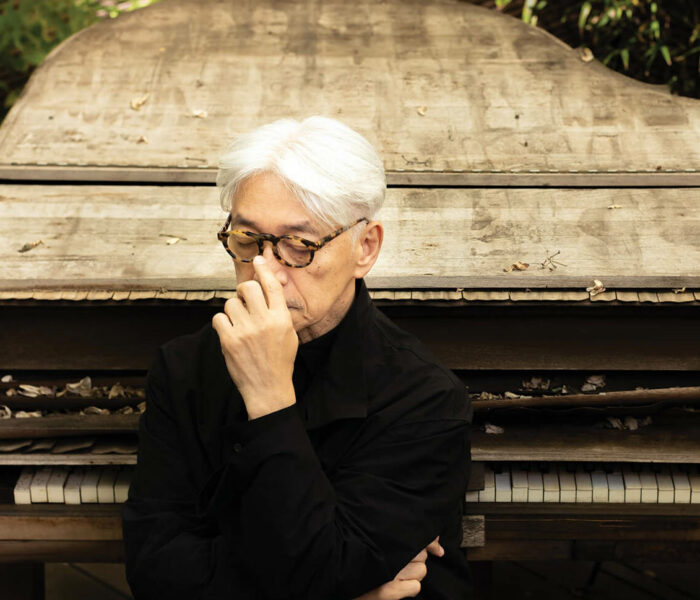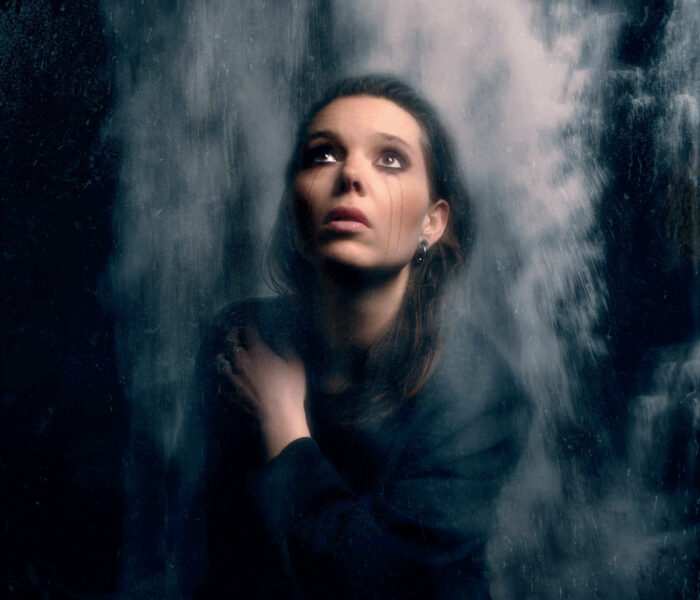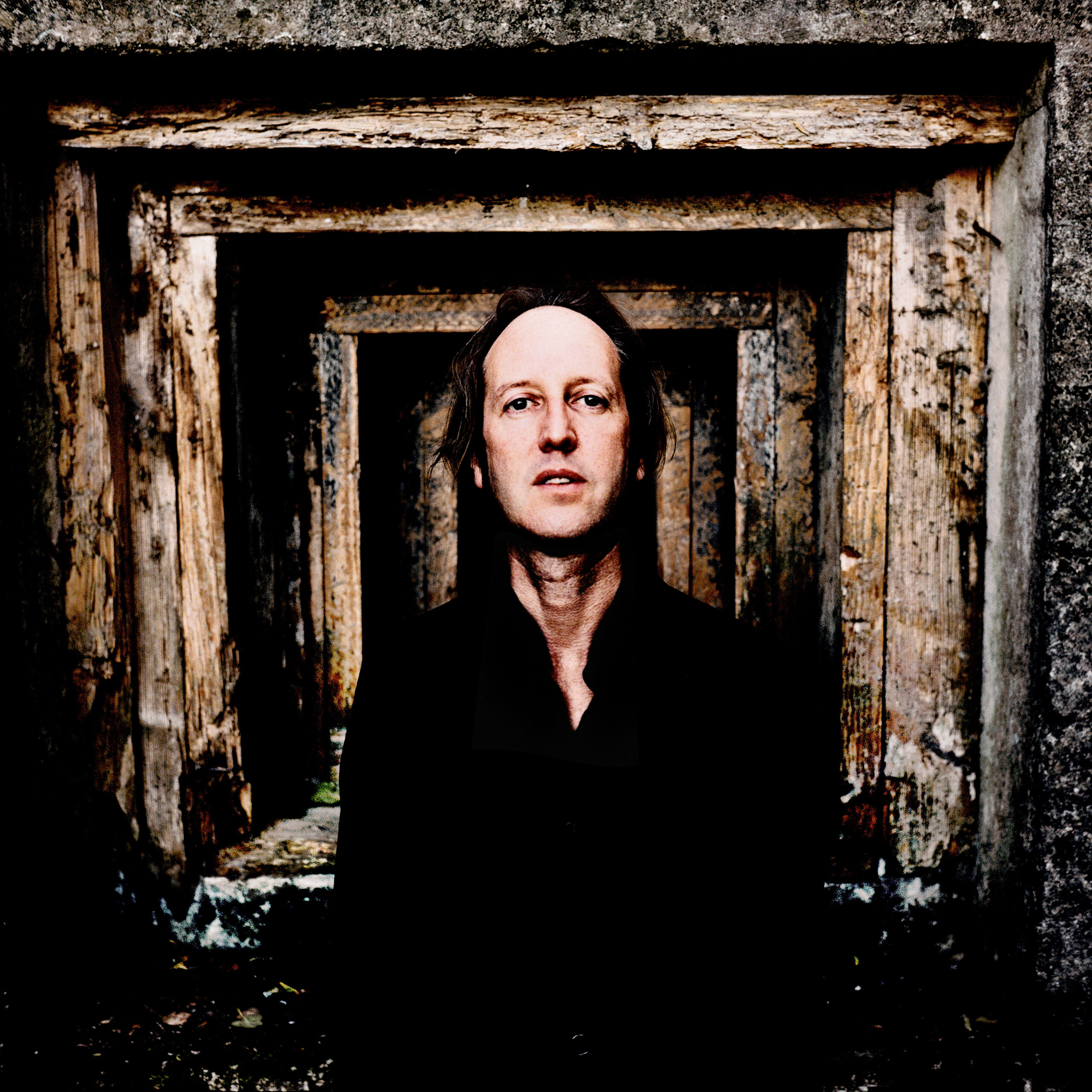Avec l’album ForeverAndEverNoMore, Brian Eno publie un disque (presque) entièrement chanté pour la première fois depuis Before And After Science, il y a 45 ans. Dans lequel il s’affirme surtout comme un authentique chanteur, enrichissant sa palette vocale de couleurs et de textures nouvelles.
Un beau jour, Brian Eno s’est absenté de ses disques. Non que sa musique, instrumentale, soit devenue impersonnelle, bien au contraire, même si la « neutralité » – ou plutôt la malléabilité – propre à la musique « d’ameublement » était justement son propos de base. Simplement, du moment où il a inventé l’ambient music, Brian Eno a quasiment cessé d’être chanteur, lui qui pourtant s’était jusqu’alors plutôt affirmé comme tel. Ce n’est d’ailleurs pas la moindre des ambiguïtés liées à la figure d’Eno que l’image indéniablement cérébrale qui est la sienne depuis plusieurs décennies, celle d’un homme (sciemment) épris de systèmes, si on la rapporte au personnage outrancier qu’il a incarné durant la première moitié des années 1970, figure glam-rock flamboyant au point de faire de l’ombre à un Bryan Ferry. À cette figure de « non-musicien » arty, qui après avoir perverti le rock plutôt classique de Roxy Music (écouterThe Bogus Man, sur l’album for Your Pleasure de 1973), avait délivré une poignée d’albums semblant synthétiser et parfois même préfigurer les grandes tendances musicales de son époque, du punk (Third Uncle, sur l’album Here Comme The Warmjets en 1974) au krautrock (la deuxième partie de l’album Before And After Science, 1977).
L’homme aux milles voies
C’était donc en 1979, avec la parution du très culte album Ambient 1: Music For Airports, acte de naissance de la musique ambient. Auparavant, il y avait eu des escapades (quasi) instrumentales avec le guitariste Robert Fripp – (No Pussyfooting), 1973 – et avec les cousins germains de Cluster et Harmonia, ou encore l’album Discreet Music en 1975. Il y avait eu aussi la création du label Obscure Records, dont les 10 références parues entre 1975 et 1978 (Gavin Bryars, Christopher Hobbs, John Adams, David Toop, John Cage, Michael Nyman, Penguin Café Orchestra, Harold Budd !) disent assez la sagacité du bonhomme.
Car ce n’est pas un hasard s’il revenait en 1974 à Brian Eno de signer la préface du livre (passionnant) de Michael Nyman, Experimental Music. Passé (comme d’ailleurs Nyman) par le Scratch Orchestra et le Portsmouth Sinfonia, ces orchestres ouverts aux non-musiciens, initiés respectivement par Cornelius Cardew et Gavin Bryars, enfant de John Cage comme beaucoup d’autres, Brian Eno avait depuis longtemps un pied dans les deux mondes. Et il semblait avoir décidé de vivre désormais sa vie de pop-star par procuration, au poste de producteur chic conférant aux disques de Devo ou de David Bowie (avant les Talking Heads, U2, James, Slowdive ou Coldplay) une couleur expérimentale. Ou de « curateur » avant la lettre, avec par exemple cette compilation No New York concoctée en 1978 suite à un séjour à Manhattan, qui allait donner son nom à la no-wave. Authentique éminence grise, Brian Eno est la personne rêvée pour jouer à « six degrés de séparation ». Et un cas très rare et exemplaire, à même pas trente ans, d’hybridation entre musiques « savantes » et « populaires ». Bref, en 1979, Brian Eno était partout. Mais, trop affairé à ses machines et manipulations sonores, souvent magiques il est vrai, et à ses préoccupations conceptuelles, il s’est dilué dans sa musique.
« La musique ambient doit pouvoir s’accommoder de nombreux degrés d’attention auditive sans en privilégier aucun en particulier, elle doit pouvoir aussi bien passer inaperçue qu’être intéressante », écrivait Eno pour accompagner Music For Airports. En d’autres termes, elle doit être aussi pertinente à entendre en fond sonore qu’à fond les ballons, en mode écoute exclusive. La voix étant un instrument par trop sujet à capter l’attention, il était naturel qu’elle se retire. Ce qui n’a rien retiré à la musique d’Eno de sa densité organique.
Brian Eno s’est toujours défié de l’image de l’artiste « architecte », démiurge possédant une vision absolument claire de l’œuvre finale, et préfère promouvoir l’idée d’artiste « jardinier », plantant des graines qui peut-être ensuite vont éclore et vivre leur vie. Ne pas oublier qu’en 1975, il avait également publié, avec l’artiste Peter Schmidt (dont beaucoup d’images ornent ses pochettes), les Stratégies obliques, un jeu de carte censé venir en aide aux musiciens en panne d’inspiration, en le guidant au hasard vers des directions inconnues. Sa musique atmosphérique est moins utilitaire qu’écologique. Another Green World ?
Ainsi Eno s’est-il, plusieurs décennies durant, a(ban)donné aux vertus bienfaisantes de l’ambient, régulièrement avec d’autres – son frère Roger, Harold Budd, Laraaji, Jon Hassell, Laurie Anderson, John Cale, Daniel Lanois… Une sorte de « Who’s Who » du Quatrième Monde, dont la postérité est immense – les confinements de 2020-21 n’ayant pas peu contribué à son retour en grâce. Il y a eu aussi des installations sonores pour des galeries d’art ou des aéroports, des créations musicales auto-génératives, poussant plus avant la réflexion sur les musiques « d’ameublement ». des sonneries pour des entreprises de téléphonie… Toujours un pied entre les mondes.
La planète des sages
Pour autant, la voix n’a jamais complètement déserté la musique de Brian Eno ; loin de là. En témoigne par exemple le très amniotique Drawn For Life (avec Peter Schwalm, 2001), ou les chansons composées avec David Byrne (Talking Heads) ou Karl Hyde (Underworld). Et parfois même, c’était la sienne.
La voix d’Eno est plutôt aiguë, elle a longtemps été aussi en retrait, un rien distanciée, presque blanche, et souvent doublée, démultipliée. Une texture sonore avant d’être un organe. Une ligne instrumentale qui se fond parmi les autres, une mélodie, un gimmick. C’est justement cela qui confère toute leur magie, toute leur teneur hypnotique à des chansons telles que By This River ou (avec Harmonia) Luneburg Heath, et que l’on entend dans la manière de traiter les chœurs sur l’album Remain In Light des Talking Heads par exemple ; cette manière de chanter en a d’ailleurs influencé plus d’un… On avait été heureux de la retrouver, cette voix, en 2005 sur l’album Another Day On Earth, au détour de la chanson-(presque) titre,Just Another Day, ou sur le morceau Return composé avec Karl Hyde en 2014. Ailleurs sous forme de chœur ou d’ersatz robotique, vocodé au point d’être méconnaissable. Sans parler de son album « pop » inédit de 1992, My Squelchy Life, finalement remplacé par un disque instrumental (mais replacé par bribes sur certaines anthologies ultérieures).Eno n’aurait-il été qu’un chanteur contrarié ?
Avec ForeverAndEverNoMore, 22e album (paraît-il) paru cet automne, on a eu en tout cas l’heureuse surprise de retrouver Eno en chanteur « engagé ». Au sens physique du terme. Outre la patine des ans, qui confère à la voix du sexagénaire un grain, une épaisseur, un vibrato inédits, Brian Eno vocalise, psalmodie presque sur des morceaux beaucoup plus ouverts, beaucoup plus « abstraits » voire ambient (Garden Of Stars) que les pop-songs dont il n’avait que rarement outrepassé le cadre. Ou alors ce sont des pop-songs étendues, étales, distordues, malléables donc, telles que There Were Bell (avec Roger Eno à l’accordéon). Car ce qui frappe surtout, et émeut, c’est combien la voix de Brian Eno, fût-il en « duo » avec sa fille Darla (We Let it In, I’m Hardly Me), est à ce point en avant, incarnée, organe désormais autant que matière. C’est la voix d’un vieux sage qu’on a le sentiment d’entendre ici, au premier plan. Les traitements sonores sont toujours présents, mais ce qui ressort en premier, c’est un sentiment nouveau d’humanité. Lié sans doute aussi à la teneur humaniste des paroles, qui donne à l’ensemble une résonance presque désabusée, sinon testamentaire.
On découvre alors qu’en 2008, Brian Eno avait livré pour la National Public Radio américaine une chronique intitulée : « Chanter, le secret de la longévité ». Il y racontait sa pratique du chant choral au sein d’un ensemble fondé avec des amis, y citait une étude scandinave arguant que les trois piliers d’une vie heureuse était camper, danser et chanter, y faisait l’apologie des bénéfices physiques et psychologiques du chant. Ce texte ne donne que plus de prix à ForeverAndEverNoMore, et éclaire sous un jour nouveau la trajectoire de ce musicien décidément insaisissable. Brian Eno, humain avant tout.
David Sanson
Photo © Thomas Daskalakis, Acropolis



)



